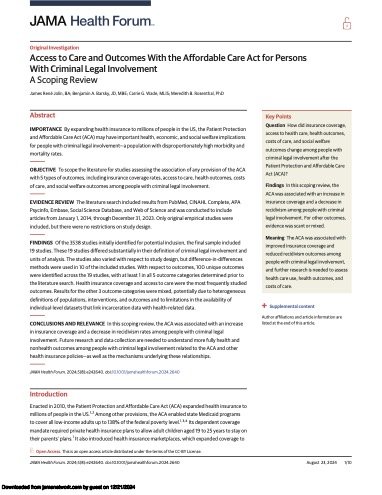By Paul H. Robinson and Jeffrey Seaman
The decarceration movement enjoys enthusiastic support from many academics and activists who point out imprisonment’s failure to rehabilitate and its potential criminogenic effects. At the same time, many fiscal conservatives and taxpayer groups are critical of imprisonment’s high costs and supportive of finding cheaper alternatives. Yet, despite this widespread support, the decarceration movement has made little real progress at getting offenders out of prison, in large part because community views, and thus political officials, are strongly committed to the importance of doing justice – giving offenders the punishment they deserve – and decarceration is commonly seen as inconsistent with that nonnegotiable principle. Indeed, almost no one in the decarceration movement has attempted to formulate a large-scale decarceration plan that still provides for what the community would see as just punishment.
In this Article, we offer just such a plan by demonstrating that it is entirely possible to avoid the incarceration of most offenders through utilizing non-incarcerative sanctions that can carry a total punitive effect comparable to physical prison. New technologies allow for imposing “electronic prison” sentences where authorities can monitor, control, and punish offenders in a cheaper and less damaging way than physical prison while still doing justice. Further, the monitoring conditions provided in electronic prison allow for the imposition of a wide array of other non-incarcerative sanctions that were previously difficult or impossible to enforce. Even while it justly punishes, electronic prison can dramatically increase an offender’s opportunities for training, treatment, education, and rehabilitation while avoiding the problems of unsupported families, socialization to criminality, and problematic reentry after physical incarceration. And, from a public safety standpoint, electronic prison can reduce recidivism by eliminating the criminogenic effect of incarceration and also provides longer-term monitoring of offenders than an equivalently punitive shorter term of physical imprisonment. Of course, one can imagine a variety of objections to an electronic prison system, ranging from claims it violates an offender’s rights to fears it may widen the net of carceral control. The Article provides a response to each.
Electronic prison is one of those rare policy proposals that should garner support from across the political spectrum due to effectively addressing the complaints against America’s incarceration system lodged by voices on the left, right, and center. Whether one’s primary concern is decarcerating prisoners and providing offenders with needed treatment, training, counseling, and education, or one’s concern is reducing crime, imposing deserved punishment, or simply reducing government expenditures, implementing an electronic prison system would provide a dramatic improvement over America’s current incarceration policies.
Written April 2024. U of Penn Law School, Public Law Research Paper No. 24-20,





















